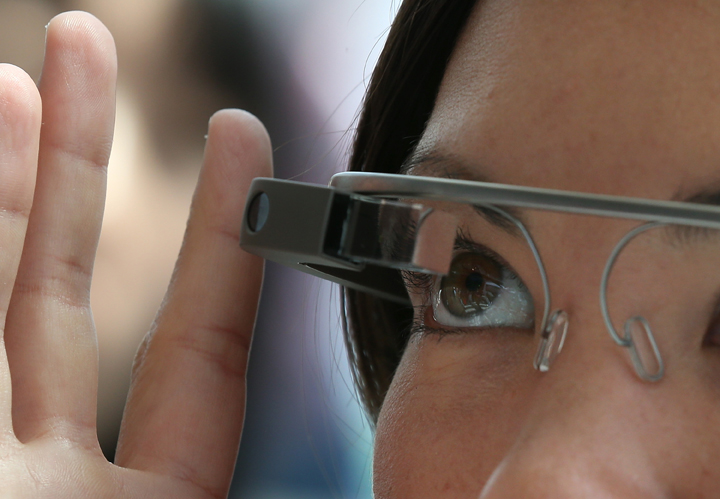TORONTO – It was just two months ago that Toronto native Tom Emrich opened the box that housed his Google Glass and dreamed up a world in which Toronto were the most Glass-friendly city in the world.

His fascination with the Matrix-like invention, coupled with his passion for Toronto’s emerging fascination with technology, fueled the ambitious vision – which seemed even more farfetched given the fact Emrich is only one of ten Canadians who own the technology.
But, after two months of experimenting with Google’s first foray in wearable tech (and getting used to ditching his eyeglasses for contacts in order to use the device), Emrich has made great strides in achieving his vision.
“I had this idea if I could develop three apps that were city-centric, that – from what I see out there – we may be the most Glass-ready city in that we would already have a transit app, a restaurant app and a bike app.”
Emrich has conceptualized and helped design two apps for the device – a tongue-in-cheek transit app called “Stay Glassy, TTC” which will help Glass users to plan trips on TTC buses and streetcars, and a restaurant finder app dubbed “Glass Eats” that uses Yelp’s directory to find nearby restaurants.
“Right now there are some things that Glass does well in an urban setting. The biggest thing is that it is integrated in with Google Maps,” said Emrich.
However, one of the main things missing from the current version of Glass is the integration of transit directions in Google Maps. And, as any urban dweller knows, transit trip planners can be a lifesaver when trying to navigate busy city streets.
How the app appears from a Glass users point of view. Image courtesy of Tom Emrich/SplitElement Inc.
In its current version, the app only provides data for Toronto’s streetcars and buses. However, Emrich said that he and his team of developers plan to add subway directions in the future.
Emrich conceptualized Glass Eats during the Google Glass hackathon in July, which brought together Google Glass explorers – the term given to those who paid $1,500 to help test and design apps for the first edition of the technology – to create apps in just four days.
“This app basically allows you to find a restaurant nearby – you ask Glass to find restaurants in proximity to your location, or you can search by category – whether it is brunch, Chinese food, or burgers,” explained Emrich.
The app then allows users to call to make reservations, or to get directions to the restaurant.
How the app appears from a Glass users point of view. Image courtesy of Tom Emrich/SplitElement Inc.
Emrich then added to his arsenal of city-dweller apps by enlisting fellow Google Glass explorer and independent game developer Macy Kuang – whom he met at the hackathon – to bring her BIXI bike-sharing app to the mix.
Kuang’s app called ‘BikeShare’ tells users where the nearest BIXI station is, how many bikes are available and even how many docks are open to drop off your bike.
In addition to putting together three Toronto-centric apps for Glass, Emrich may have tapped into an area of Glass development that has been largely left untouched since the device’s release.
The Glass explorer and freelance tech writer has yet to find another transit app designed for Glass – though he notes that it can be quite difficult to find all of the apps created for the device as there is no “app store.”
Most Glass apps can be found through developer forums or through directories that allow explorers to search by category.
But at the centre of his vision lies a love for his city and the faith that Canada can become a stand-out when it comes to wearable technology.
“The whole thing with Glass is that it’s so new – having come from eight years in the mobile industry where ringtones and wallpapers were the applications at the time, I have already seen how exciting early times are in technology,” said Emrich.
“Holding this new wearable technology at this stage was extremely exhilarating for me because I knew that I was early on and so I saw just so many possibilities of being able to do things first.”
Emrich said he loves the irony of the thought of Toronto being the most Glass-ready city in the world, seeing as how there are only ten Canadians who own a pair of the sought-after glasses – not to mention they remain commercially unavailable for consumers.
“It really was a weird vision – but when I get something stuck in my head I chase it and I was really excited to make it happen,” said Emrich.
This explorer believes that wearable technology will catch on – though it might take five to ten years for devices like Google Glass to become all the rage.
“I think Glass becomes much more akin to what we are used to wearing on our face, rather than this movie-like lens-less futuristic device – but I think it will be a logical choice,” said Emrich.






Comments